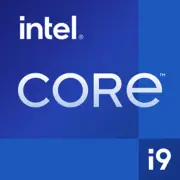Intel Core i9-7980XE Extreme Edition

Intel Core i9-7980XE Extreme Edition: Leitfaden für das legendäre 18-Kern-Monster (2025)
Datum der Aktualisierung: April 2025
Hauptmerkmale: Architektur, Fertigungsprozess und einzigartige Eigenschaften
Der Intel Core i9-7980XE, der 2017 auf den Markt kam, bleibt eine Kultlösung für Enthusiasten. Trotz seines Alters sind die 18 Kerne und 36 Threads nach wie vor relevant für spezifische Aufgaben.
Architektur und Fertigungsprozess
- Codename: Skylake-X.
- Fertigungsprozess: 14 nm (optimierte Version von Intel 14nm++).
- Basisfrequenz: 2,6 GHz, mit Turbo Boost bis zu 4,4 GHz (Turbo Boost Max 3.0).
- Cache: 24,75 MB L3, 1 MB L2 pro Kern.
Wichtige Features
- Entsperrter Multiplikator für manuelles Übertakten.
- Unterstützung für Intel Optane Memory und AVX-512 für Arbeitslasten.
- 44 PCIe 3.0-Linien — Möglichkeit zur Verbindung mehrerer GPUs und NVMe-Laufwerke.
Leistung
In den Cinebench R23-Tests zeigt der 7980XE etwa 3400 Punkte im Einzeltest und bis zu 32000 im Multitest. Zum Vergleich: Der moderne Core i9-14900K (24 Kerne) erreicht etwa 28000 Punkte im Multitest, hat jedoch Vorteile in Einzelanwendungen dank Frequenzen von bis zu 6 GHz.
Kompatible Mainboards: Sockel, Chipsätze und Auswahlkriterien
Sockel: LGA 2066 — spezialisierte Plattform für HEDT (High-End Desktop).
Chipsätze
- Intel X299: Die einzige Option. Unterstützt Übertaktung, multithreadfähige GPU-Konfigurationen (NVLink/SLI) und bis zu 128 GB DDR4.
Empfohlene Modelle
- ASUS ROG Rampage VI Extreme — Wahl der Übertakter (Preis 2025: ~$450 für neu, falls zu finden).
- MSI X299 Gaming Pro Carbon AC — gutes Preis-Leistungs-Verhältnis (~$300).
Auswahlkriterien
- VRM-Modul: Mindestens 8-phasig für stabiles Übertakten.
- VRM-Kühlung: Kühlkörper mit Heatpipes sind unverzichtbar — der Chipsatz wird unter Last heiß.
- Ports: Suchen Sie nach Boards mit USB 3.2 Gen2, Thunderbolt 3 (über zusätzlichen Controller) und 2-3 M.2-Slots.
Unterstützter Speicher: DDR4 und Einschränkungen
- Typ: Nur DDR4 (DDR5 wird nicht unterstützt).
- Frequenzen: Offiziell bis zu 2666 MHz, aber mit Übertaktung bis zu 3600 MHz (abhängig vom Board und den Speicherchips).
- Konfigurationen: 4- oder 8-Kanal-Betrieb (bei den meisten X299-Boards — 4-Kanal).
Praxisbeispiel
Ein Build mit G.Skill Trident Z RGB (4x16 GB, 3200 MHz) zeigt einen Zuwachs bei der Renderzeit von bis zu 12 % im Vergleich zu 2666 MHz.
Netzteile: Leistungsberechnung und Empfehlungen
TDP des Prozessors: 165 W, aber bei Übertaktung (bis zu 4,6 GHz auf allen Kernen) erreicht der Verbrauch 300 W.
Empfehlungen
- Mindestens: 850 W (für PCs mit einer GPU der Klasse RTX 4080).
- Optimal: 1000–1200 W (für 2x GPUs, RAID-Arrays und Peripheriegeräte).
- Zertifikate: 80+ Gold oder Platinum (Corsair HX1200, Seasonic PRIME TX-1000).
Wichtig! Günstige Netzteile mit hohen Ripple können zu Abstürzen bei Mehrkernlast führen.
Vor- und Nachteile des i9-7980XE
Vorteile
1. Multithread-Power: 36 Threads sind relevant für Rendering, Codekompilierung, Virtualisierung.
2. Skalierbarkeit: Unterstützung von 4-Kanal-Speicher und 44 PCIe 3.0-Linien.
3. Übertaktungspotenzial: Experten übertakten ihn auf bis zu 4,8 GHz mit flüssigem Stickstoff.
Nachteile
1. Stromverbrauch: Bei Übertaktung „frisst“ das System bis zu 500 W.
2. Veraltete Plattform: Keine PCIe 4.0/5.0, DDR5, USB4.
3. Preis: Neue Exemplare kosten 2025 zwischen 1500 und 2000 USD (falls verfügbar).
Einsatzszenarien: Wo der i9-7980XE immer noch glänzt
1. Arbeitsstationen
- 3D-Rendering (Blender, V-Ray): 18 Kerne verkürzen die Renderzeit komplexer Szenen.
- 8K-Video-Editing: In Premiere Pro und DaVinci Resolve bewältigt der Prozessor das Proxy-Encoding im Hintergrund.
2. Virtualisierung
Betrieb von 5–7 virtuellen Maschinen gleichzeitig ohne Lags (Beispiel: Softwareentwicklung in isolierten Umgebungen).
3. Gaming
- Streaming: Codierung auf der CPU in OBS hat fast keinen Einfluss auf das FPS.
- Spiele mit Fokus auf Multithreading (Civilization VI, Microsoft Flight Simulator 2024) — stabile 60+ FPS in 4K.
Aber! In CS2 oder Cyberpunk 2077 mit RTX 4090 verliert er gegenüber modernen Core i9-14900K um 15-20 % aufgrund niedrigerer IPC (Instructions per Cycle).
Wettbewerber: Mit wem zu vergleichen im Jahr 2025?
1. AMD Ryzen Threadripper 1950X (2017): 16 Kerne, ~$1000. Verliert im Multithreading (~25000 in Cinebench R23), ist aber günstiger.
2. AMD Threadripper 3970X (2019): 32 Kerne, aber ab $2000. Für diejenigen, die maximale Leistung benötigen.
3. Intel Core i9-13900KS (2023): 24 Kerne (8P+16E), höhere IPC, aber eingeschränkter LGA 1700 Sockel.
Fazit: Der 7980XE ist die Wahl für diejenigen, die bereits ein X299-Board besitzen und ein Upgrade ohne Plattformwechsel wünschen.
Tipps zum Build
1. Kühlung
- Wasserkühlung: Arctic Liquid Freezer II 420 (420 mm Radiator).
- Luftkühlung: Noctua NH-D15 (mit Tausch der Halterungen für LGA 2066).
2. Gehäuse
- Minimum: Lian Li PC-O11 Dynamic (gute Belüftung).
- Ideal: Thermaltake Core WP100 (unterstützt E-ATX und Wasserkühlung).
3. Zusätze
- Wärmeleitpaste Thermal Grizzly Kryonaut.
- Zusätzliche Lüfter zur Kühlung der VRM.
Abschlussbewertung: Für wen eignet sich i9-7980XE im Jahr 2025?
Dieser Prozessor ist interessant, wenn:
- Sie bereits ein X299-Board haben und ein Upgrade ohne Austausch des Mainboards benötigen.
- Sie mit multithreadfähigen Anwendungen arbeiten und nicht bereit sind, auf DDR5/PCIe 5.0 umzusteigen.
- Sie einen seltenen „Old-School“ HEDT-PC für Experimente möchten.
Für Gamer und durchschnittliche Benutzer ist die Wahl suboptimal: Moderne Core i7/i9 der 13.–14. Generation und Ryzen 7000/8000 bieten bessere Energieeffizienz und Einzel-Thread-Geschwindigkeit.
Wenn Sie den neuen i9-7980XE im Jahr 2025 finden — es ist ein Rarität. Aber für spezifische Aufgaben kann er immer noch mit seiner Leistung überzeugen und erinnert an die Ära, in der Intel im HEDT-Segment dominierte.
Basic
CPU-Spezifikationen
Speicherspezifikationen
Verschiedenes
In sozialen Medien teilen
Oder verlinken Sie uns
<a href="https://cputronic.com/de/cpu/intel-core-i9-7980xe-extreme-edition" target="_blank">Intel Core i9-7980XE Extreme Edition</a>